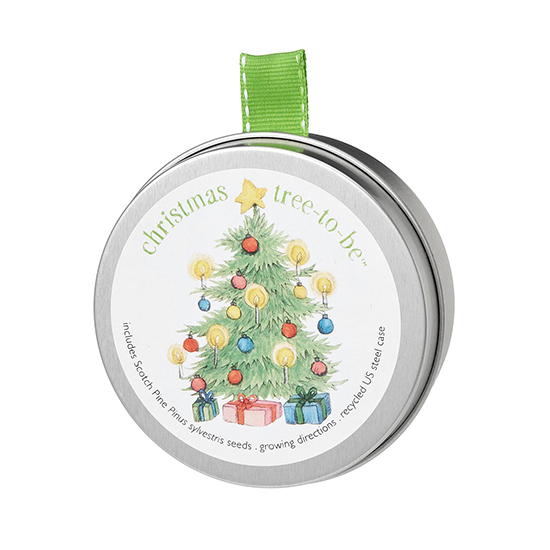 The New Year seems like a great time to start making change in your life. And yet, 25% of people keep setting the same goals, year after year, without ever achieving them. So what good are they? In 1979, there was a goal-setting study conducted among Harvard MBA students. Only 13% of them had made any specific goals for themselves, and only 3% of students had written those goals down. When a follow-up was conducted a decade later, it was found that the students with goals in mind were earning twice as much as their goal-less peers. Those who had written their goals down, however, were earning a whopping ten times more than the other 97% of their graduating class. So while writing down your desire to go to the gym or stop smoking may seem futile, it may in fact have amazing results.
The New Year seems like a great time to start making change in your life. And yet, 25% of people keep setting the same goals, year after year, without ever achieving them. So what good are they? In 1979, there was a goal-setting study conducted among Harvard MBA students. Only 13% of them had made any specific goals for themselves, and only 3% of students had written those goals down. When a follow-up was conducted a decade later, it was found that the students with goals in mind were earning twice as much as their goal-less peers. Those who had written their goals down, however, were earning a whopping ten times more than the other 97% of their graduating class. So while writing down your desire to go to the gym or stop smoking may seem futile, it may in fact have amazing results.
 Virginia is possibly America’s most famous 8-year-old, although her fame is primarily due to a man whose name history has largely forgotten—Francis Pharcellus Church. Church had been a war reporter during the Civil War, and in 1897 he was an editor for The Sun, one of New York’s major newspapers. Young Virginia O’Hanlon had been told by her father that “if you see it in The Sun, it’s so.” So when her friends began to question the reality of Santa Claus, Virginia knew where to turn for an authoritative answer. Church’s response, which was titled Is There a Santa Claus? but is now better known by one of its key lines, was just a small article tucked low on the page, but it struck a chord with a war-weary populous looking for hope. It has gone on to become the most reprinted editorial of all time. Virginia herself went on to put her inquiring mind to good use, eventually earning her PhD from Fordham University and becoming a school administrator.
Virginia is possibly America’s most famous 8-year-old, although her fame is primarily due to a man whose name history has largely forgotten—Francis Pharcellus Church. Church had been a war reporter during the Civil War, and in 1897 he was an editor for The Sun, one of New York’s major newspapers. Young Virginia O’Hanlon had been told by her father that “if you see it in The Sun, it’s so.” So when her friends began to question the reality of Santa Claus, Virginia knew where to turn for an authoritative answer. Church’s response, which was titled Is There a Santa Claus? but is now better known by one of its key lines, was just a small article tucked low on the page, but it struck a chord with a war-weary populous looking for hope. It has gone on to become the most reprinted editorial of all time. Virginia herself went on to put her inquiring mind to good use, eventually earning her PhD from Fordham University and becoming a school administrator.
 Christmas has found itself on the wrong side of the law and public opinion through the centuries, and sometimes for good reason. But Christmas-bashing in America can be traced as far back as 1659. That was the year that William Bradford, Governor of the Pilgrim colony at Plymouth, signed into law a ban on celebrating Christmas. That law would remain in force for more than twenty years. Why such a Grinch-like attitude from such a pious community? A hint might come from the writings of Reverend Increase Mather, who complained in 1687 that Christmas was mostly celebrated “in Compotations, in Interludes, in playing at Cards, in Revellings, in excess of Wine, in mad Mirth.” Sounds like a Puritan Christmas was a lot like New Year’s Eve.
Christmas has found itself on the wrong side of the law and public opinion through the centuries, and sometimes for good reason. But Christmas-bashing in America can be traced as far back as 1659. That was the year that William Bradford, Governor of the Pilgrim colony at Plymouth, signed into law a ban on celebrating Christmas. That law would remain in force for more than twenty years. Why such a Grinch-like attitude from such a pious community? A hint might come from the writings of Reverend Increase Mather, who complained in 1687 that Christmas was mostly celebrated “in Compotations, in Interludes, in playing at Cards, in Revellings, in excess of Wine, in mad Mirth.” Sounds like a Puritan Christmas was a lot like New Year’s Eve.
 Ah, the charming holiday tradition of singing carols door to door. It’s actually an ancient practice, once linked more to Twelfth Night (January 6) than to Christmas, and the word “wassail” comes from a Middle English wish of good health. All of that seems benign enough, except that sometimes wassailing was less than polite. Crowds of drunken young men would go from house to house, demanding food, drink or money in exchange for their songs. If the homeowner was less than hospitable to these “friends,” the crowd might simply continue to make noise outside their windows until given what they came for, or they might resort to acts of vandalism or even violence. And this was not strictly an Old World problem. In 1823, when Clement Clarke Moore was penning A Visit from St. Nicholas, with the words “Not a creature was stirring, not even a mouse,” there were similar bands of rowdy Christmas drunks terrorizing the neighborhoods of New York City where he lived.
Ah, the charming holiday tradition of singing carols door to door. It’s actually an ancient practice, once linked more to Twelfth Night (January 6) than to Christmas, and the word “wassail” comes from a Middle English wish of good health. All of that seems benign enough, except that sometimes wassailing was less than polite. Crowds of drunken young men would go from house to house, demanding food, drink or money in exchange for their songs. If the homeowner was less than hospitable to these “friends,” the crowd might simply continue to make noise outside their windows until given what they came for, or they might resort to acts of vandalism or even violence. And this was not strictly an Old World problem. In 1823, when Clement Clarke Moore was penning A Visit from St. Nicholas, with the words “Not a creature was stirring, not even a mouse,” there were similar bands of rowdy Christmas drunks terrorizing the neighborhoods of New York City where he lived.
 You know those commercial jingles that get stuck in your head for what feels like an eternity? Or one line from a pop song you don’t even really know the lyrics to? That’s more than a minor annoyance; it’s an actual affliction called earworm, a name that sounds a lot more alarming than just a harmless bit of music overstaying its welcome. Studies have shown that 99% of us have suffered from it, but musicians, women, and people under stress are the most prone. Some tried and true methods to kick it? Keep yourself busy with a mental task like Soduku, listen to the song all the way through, or “pass it on” and sing it to a friend–just don’t be surprised it they become your ex-friend after one too many stanzas from the commercial for your local furniture store.
You know those commercial jingles that get stuck in your head for what feels like an eternity? Or one line from a pop song you don’t even really know the lyrics to? That’s more than a minor annoyance; it’s an actual affliction called earworm, a name that sounds a lot more alarming than just a harmless bit of music overstaying its welcome. Studies have shown that 99% of us have suffered from it, but musicians, women, and people under stress are the most prone. Some tried and true methods to kick it? Keep yourself busy with a mental task like Soduku, listen to the song all the way through, or “pass it on” and sing it to a friend–just don’t be surprised it they become your ex-friend after one too many stanzas from the commercial for your local furniture store.
 While Santa’s street remains a mystery, at least we know his address ends in H0H 0H0. And that’s not actually a joke. It’s a Canadian postal code, which has six characters and a mix of letters and numbers. It seems that the lack of a standardized address for the jolly old elf resulted in countless numbers of children’s letters going undelivered. To solve that problem, the Canadian postal service created Santa’s own, personal ZIP code. In the decades since, millions of children have used it to mail letters to Santa in dozens of languages, and have received personalized replies in return in (with an assist from some of St. Nick’s countless postal volunteers).
While Santa’s street remains a mystery, at least we know his address ends in H0H 0H0. And that’s not actually a joke. It’s a Canadian postal code, which has six characters and a mix of letters and numbers. It seems that the lack of a standardized address for the jolly old elf resulted in countless numbers of children’s letters going undelivered. To solve that problem, the Canadian postal service created Santa’s own, personal ZIP code. In the decades since, millions of children have used it to mail letters to Santa in dozens of languages, and have received personalized replies in return in (with an assist from some of St. Nick’s countless postal volunteers).
 The first man to patent a snow globe design was actually trying to create an improved piece of surgical lighting. In the late 19th century, an Austrian named Erwin Perzy was tinkering with a Schusterkugel—a special flask filled with water that had been used for centuries as a way to focus light. Perzy hoped to create a better surgical lamp by suspending bits of reflective material in the liquid. The sparkling effect reminded him of snow, and so he created a version of the flask with a model of an Austrian cathedral inside. When requests for more of his Schneekugel (snowball) began pouring in, he and his brother founded a business in Vienna to create them full-time. That family-run business continues today, and the precise material they use for their “snow” is a family secret that has been handed down over the generations.
The first man to patent a snow globe design was actually trying to create an improved piece of surgical lighting. In the late 19th century, an Austrian named Erwin Perzy was tinkering with a Schusterkugel—a special flask filled with water that had been used for centuries as a way to focus light. Perzy hoped to create a better surgical lamp by suspending bits of reflective material in the liquid. The sparkling effect reminded him of snow, and so he created a version of the flask with a model of an Austrian cathedral inside. When requests for more of his Schneekugel (snowball) began pouring in, he and his brother founded a business in Vienna to create them full-time. That family-run business continues today, and the precise material they use for their “snow” is a family secret that has been handed down over the generations.
Uncommon Knowledge: What happens when the alcohol is missing from eggnog?
December 10, 2013Riots might break out. No, seriously it could happen. In fact, if you were attending West Point Military Academy almost 200 years ago, you’d be dealing with what has become known as the Christmas Eggnog Riot of 1826. After years of turning a blind eye to the students’ spiked holiday tradition, a strict superintendent finally cracked down on booze. When one of the dormitories got caught with the hard-to-find hooch (one cadet had rowed across a river for a gallon of brandy and wine!), it set off a chain of unruly events that resulted in fist fights, shots fired, broken windows, hijacked drums and fifes, and the largest mass expulsion in the school’s history. Consider yourself warned.
Bag Dog Tum blers, $35
blers, $35
